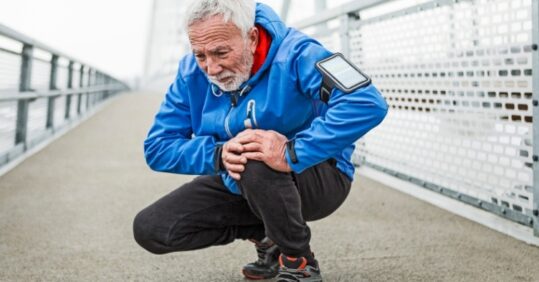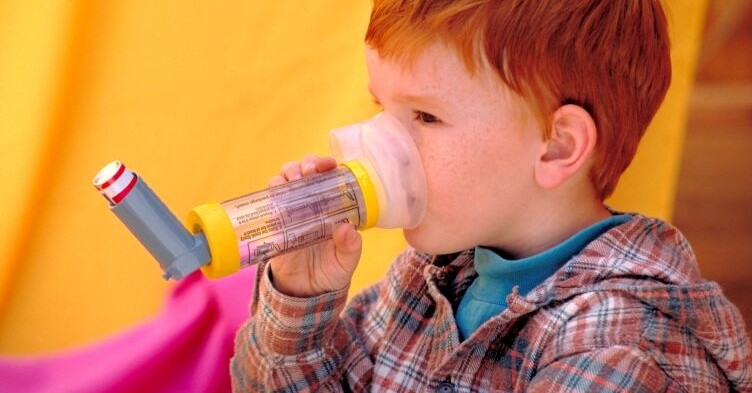Ten top tips: supporting people with musculoskeletal disorders during Covid-19

The Covid-19 pandemic has had a major impact on society. Whilst nursing teams have had to change the way they have worked, patients have also had to find a ‘new normal’ in their lives. This has been particularly impactful for people with musculoskeletal disorders.
Disorders such as osteoarthritis, rheumatoid arthritis (RA), low back pain and tendinopathy are a major source of pain, fatigue and disability. Covid-19 restrictions placed on exercise and activities have had a profound impact on individuals who rely physical activity to self-manage bone, joint and muscle conditions. Furthermore, for the period between 23 March and 1 August 2020, those categorised as most at risk of Covid-19 infection were required to ‘shield’ at home, avoiding all social contact. This included a high proportion of people with musculoskeletal disorders, particularly those prescribed immune-suppressant medications for inflammatory rheumatic conditions such as RA. Consequentially, many individuals reduced their contact with community health services either by following national guidelines or by personal choice from fear of ‘catching Covid’.
In late April 2020, five weeks after the start of the UK ‘lockdown’, we conducted an online survey of 678 UK patients with a range of musculoskeletal disorders to assess the impact measures had on their wellbeing and ability to access healthcare. The full findings are reported can be accessed at Smith et al (2020). This report forms the basis of this Ten Top Tips on how to community nursing services can support people with musculoskeletal disorders during the on-going Covid-19 pandemic.
1. Support patients to engage with community services
A combination of confusion regarding what NHS services are available and fear regarding Covid infection meant a number of people were concerned about seeking healthcare support once ‘lock-down’ began. The consequence of this was that a number of people did not seek help from health services with significant illness which may have been mitigated through more timely management. The NHS should be commended on the speedy changes made to remote consultations by telephone or video. However continued support and work to ensure that patients understand that they can access support and do not need to ‘sit in silence’ is required as the pandemic continues.
2. Inform on non-NHS provider opening
Related Article: NHSE confirms dates and eligibility for autumn Covid and flu jabs
At the start of the Covid-19 pandemic, non-NHS providers of musculoskeletal health services including physiotherapists, osteopaths and podiatrists closed. Many people with musculoskeletal diseases rely on these services for the long-term management of their symptoms. These have now opened and patients should be encouraged to reflect on which health providers were successful pre-Covid-19 in providing symptoms relief, and to consider how these many be re-introduced into their lives as restrictions change.
3. Supporting medication access
In our survey, 88% of respondents reported little difficulty accessing medication for their musculoskeletal disorders. However, 44% needed the assistance to do this. This included formal caregivers, friends, family members and other community support networks. Local pharmacists also extended their delivery services. Supporting patients to ensure that they have access to their medications is crucial. Some patients may need support and guidance on this for both musculoskeletal and non-musculoskeletal disease control.
4. Help educate patients on medications
Some patients have found it difficult to self-managing their medications during the Covid-19 pandemic. Whilst some individuals have succeeded in this, gaining support where needed from their social network or health providers virtually, not all have managed. Sign-posting individuals to good sources of online and non-online materials to help educate people on medication usage is important, particularly for more vulnerable patients who are required to shield and may access healthcare less.
5. Encourage activity pacing
Over half of people surveyed reported an increase in their musculoskeletal symptoms from the onset of Covid-19 measures. Many patients find it difficult to ‘pace’ their activities during the day. The changes in their person routine which Covid-19 has created, has made this more difficult. Recently, many patients reported doing too much gardening or DIY whilst they have tried to stay at home during the lock-down restrictions. This has created a ‘flare’ in their symptoms. Encouraging regular breaks in activities and spacing tasks out over a day or two, helps to avoid this.
6. Sign-post to virtual exercise groups
Covid-19 has seen an explosion in online and virtual exercise groups through platforms such as YouTube or private providers offering online exercise classes. These can be a really great opportunity to introduce exercise to people who may miss their usual exercise sessions. Encouraging patients to engage such virtual groups during more strict lock-down period can be positive. Likewise, as restrictions lift, and groups re-form, encouraging patients to return to these activities can be really helpful in re-engaging with exercise.
Related Article: Practice dilemma: How can I diagnose asthma without access to tests?
7. Be creative with physical activity
Many people with musculoskeletal diseases enjoy exercising in groups. For example, Tai-Chi, Yoga and Pilates are very attractive to help manage musculoskeletal disorder symptoms. Similarly swimming can be very helpful for reducing pain, stiffness and promoting wider physical and psychological health. Covid restrictions meant the closure of exercise groups and swimming pools. When Covid restricts are tighter, and if these groups and pool are forced to close again, nurses can encourage patients to be creative to seek alternative forms of exercise. These may include home-based exercises (see tip 6), but also to remind patients that gardening, housework and active transport through walking and cycling are alternative source of physical activity.
8. Target people with limited social networks
Our survey indicated that individuals who reported greater social isolation and loneliness were less likely to access healthcare. These individuals may be at greater risk of not seeking help for musculoskeletal and non-musculoskeletal diseases, even if they become increasingly unwell. Supporting these individuals is paramount. Community nursing teams therefore have a potentially vital role in supporting people with limited social contacts who may be at particular risk if another COVID-19 lockdown is enforced.
9. Monitoring psychological impact
Many people with musculoskeletal disease experienced increased anxiety and depression during the early 2020 Covid-19 restrictions. A wealth of published evidence has reported the relationship between chronic pain and psychological distress. Fear avoidance to social gatherings and community engagement can further magnify this. Community nurses are in a unique position to monitor for signs of psychological distress and should continue to do so to ensure the health and wellbeing of their patients during this potential challenging time for some individuals.
10. Keep updated with hospital rheumatology support
Related Article: Women who work night shifts more likely to have asthma
In addition to community services, acute hospital care has radically changed to adapt to the current health crisis. Nationally, rheumatology services have started to provide remote monitoring of disease status. Community nurses should therefore be aware of what their local acute hospital rheumatology team are offering in relation to blood toxicity monitoring and overall support for these patients. As the Covid-19 status changes, monitor what services are available to help inform patients as services change.
Resources
Smith TO, Durrant K, Birt L, Belderson P, Chipping J, Yates M, Tsigarides J, Notley C, Naughton F, Shepstone L, Macgregor A. Accessing health services for musculoskeletal diseases during early Covid-19 lockdown: results from a UK population survey. Rheumatology: Advances in Practice 2020. Available at: https://academic.oup.com/rheumap/advance-article/doi/10.1093/rap/rkaa047/5910002

See how our symptom tool can help you make better sense of patient presentations
Click here to search a symptom




